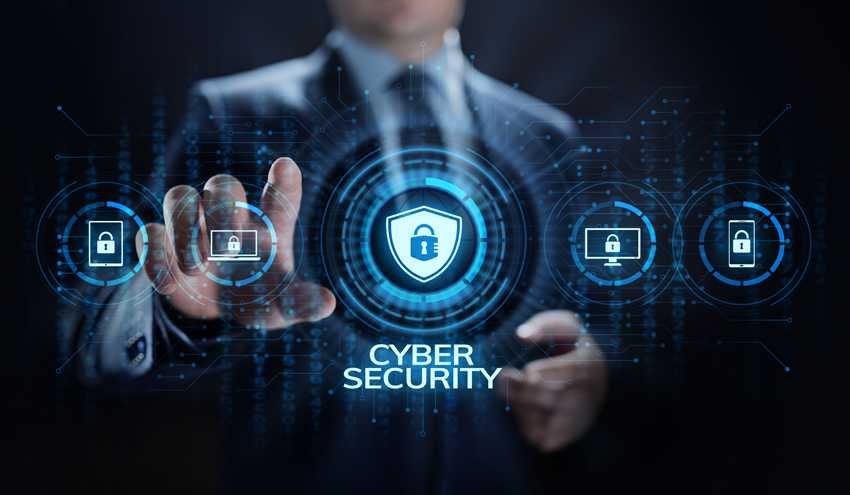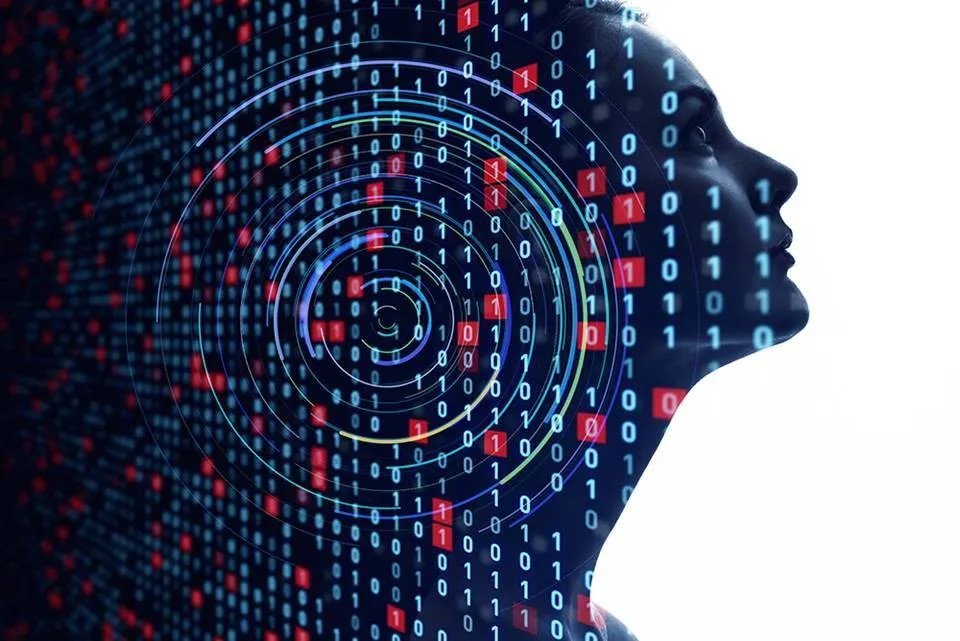CYBER SECURITY CONSULTING SERVICE AWARDS AND RECOGNITIONS
CyberSecOp's comprehensive managed security services, cyber security consulting, professional services, and data protection technology are recognized as industry-leading threat detection and response solutions by major analyst firms, key media outlets, and others.
Cybercrime: A Booming Industry Threatening Your Business
If Cybersecurity is not part of your ongoing business planning and forethought, your business will likely become an afterthought.
By incorporating strong, enforceable cybersecurity policies, your organization becomes a defensible harder target. Per a recent MSN article, if cybercrime were a standalone economy, it would be third in line behind the U.S. and China. Cybercrime is on pace to pass $17.5 trillion by 2025.
How is your organization planning for and addressing your Cybersecurity and Governance, Risk & Compliance requirements?
43% of all data breaches involve small and medium-sized businesses.
68% of all cyber-attacks focused on business disruption first and data acquisition second.
72% of cybercrime victims are large businesses (affecting not only their employees and customers but also their partners and suppliers).
Over 75% of targeted cyberattacks start with an email (RoundRobin)
Approximately 84% of all events are caused by humans
Nearly 90% of ransomware attacks are preventable
In 2021 there was an estimated 2.7billion hours of lost production globally due to cybercrime (Norton)
Beyond the Headlines: The True Cost of Cybercrime
The adoption of artificial intelligence (AI) technologies has hyper-accelerated the amount of data being generated. This growth will continue exponentially as newer platforms and tools are developed. As businesses turn to novel insurance models, which by definition are new and do not resemble what we have known or used previously to evaluate the risks related to retaining sensitive data in the current cybersecurity climate. Organizations need to understand their risk profile and the financial reality of the loss of access to their data.
it’s more important than ever to truly understand and plan for the threat landscape and the potential financial implications associated with cyber incidents, data exfiltration, and work stoppages.
The importance of data and an organization's capacity to appropriately protect it will be essential factors in assessing overall risk, influencing investors, insurability, and overall profitability.
What is Regulations Compliance and Cybersecurity Compliance?
Being compliant refers to adhering to specific laws, regulations, standards, or guidelines relevant to a particular industry or field. Compliance ensures that organizations operate within legal boundaries, meet industry standards, and uphold ethical practices. In the context of cybersecurity, compliance involves implementing measures to protect sensitive data, prevent unauthorized access, and mitigate security risks.
In today's digital landscape, cybersecurity compliance is paramount for businesses to safeguard their assets and maintain trust with customers. Failure to comply with cybersecurity regulations can result in severe consequences, including legal penalties, financial losses, and reputational damage.
Cybersecurity services play a crucial role in helping organizations achieve and maintain compliance. These services encompass a range of offerings, including cybersecurity consulting, IT security services, and cybersecurity consulting services. Cybersecurity consultants assist organizations in identifying compliance requirements, assessing their current security posture, and implementing measures to meet regulatory standards.
Cybersecurity companies like CyberSecOp offer comprehensive solutions to assist organizations in navigating the complexities of cybersecurity compliance. Here's how CyberSecOp can help:
Regulatory Expertise: CyberSecOp consultants possess in-depth knowledge of cybersecurity regulations and standards relevant to various industries. They can help organizations interpret complex compliance requirements and develop tailored strategies to address specific regulatory mandates.
Risk Assessments: CyberSecOp conducts thorough risk assessments to identify potential security vulnerabilities and compliance gaps within an organization's infrastructure. By assessing risks proactively, organizations can prioritize remediation efforts and minimize the likelihood of compliance violations.
Policy Development: CyberSecOp assists organizations in developing and implementing robust cybersecurity policies and procedures aligned with regulatory requirements. These policies cover areas such as data protection, access control, incident response, and employee training, ensuring comprehensive compliance coverage.
Technical Solutions: CyberSecOp offers a range of technical solutions to enhance cybersecurity and facilitate compliance. This includes implementing encryption technologies, access controls, intrusion detection systems, and security monitoring tools to protect sensitive data and prevent unauthorized access.
Training and Awareness: CyberSecOp provides cybersecurity training and awareness programs to educate employees about compliance requirements, security best practices, and the importance of maintaining a secure digital environment. By fostering a culture of cybersecurity awareness, organizations can empower employees to contribute to compliance efforts effectively.
Continuous Monitoring and Compliance Audits: CyberSecOp conducts regular security assessments and compliance audits to ensure ongoing adherence to regulatory standards. By monitoring systems and processes continuously, organizations can identify and address compliance issues promptly, reducing the risk of regulatory penalties and data breaches.
In summary, CyberSecOp plays a vital role in helping organizations navigate the complexities of cybersecurity compliance. By offering regulatory expertise, conducting risk assessments, developing policies and procedures, implementing technical solutions, providing training and awareness, and conducting continuous monitoring and audits, CyberSecOp assists organizations in achieving and maintaining compliance with confidence. With CyberSecOp's support, organizations can enhance their security posture, mitigate risks, and demonstrate a commitment to protecting sensitive data and maintaining compliance with applicable regulations.
Safeguarding Business Operations: The Importance of Privileged Access Management Risk Assessment
In today's digital age, businesses heavily depend on digital systems, applications, and online platforms for their day-to-day operations. However, alongside this reliance on technology comes the ever-growing risk of unauthorized access to sensitive accounts and data. Particularly vulnerable are companies with privileged access to critical systems and applications, making them prime targets for cyber threats aimed at exploiting human vulnerabilities within organizations.
Recent headlines have shed light on the alarming sophistication of cybercriminals, with reports of ransom scams employing AI-generated deepfakes to manipulate individuals into surrendering substantial sums of money. Such incidents underscore the evolving tactics of cyber attackers and their readiness to exploit technological advancements for financial gain.
The impact of cybercrime on businesses cannot be overstated. According to recent statistics, in 2022 alone, the FBI received over 900,000 cybercrime complaints, resulting in staggering losses amounting to $5.3 billion. From phishing scams to ransomware attacks, cybercriminals employ a diverse array of tactics, leveraging AI-powered technologies to breach security measures and wreak havoc on organizations' digital infrastructure.
In light of these escalating threats, it is imperative for businesses to remain vigilant and proactively safeguard their digital assets. One crucial step towards bolstering cybersecurity defenses is the implementation of Privileged Access Management (PAM) risk assessments.
By conducting thorough PAM risk assessments, organizations can identify potential security gaps and vulnerabilities associated with privileged access to critical systems and applications. This process involves several key steps:
Step 1: Identify privileged users and assets
Begin by identifying all individuals, including employees, contractors, and third-party vendors, who possess privileged access to critical systems and applications. Simultaneously, pinpoint the assets these users can access, such as servers, databases, and essential applications.
Step 2: Determine the level of access
Next, ascertain the extent of access granted to each privileged user. This entails delineating the specific privileges conferred upon them, such as administrative or superuser access. Moreover, evaluate existing policies and procedures governing access to critical assets.
Step 3: Assess the risks
Conduct a comprehensive assessment of the risks associated with privileged access. Identify potential threats and vulnerabilities, including unauthorized access attempts, data breaches, and insider threats. Assess the potential impact of these risks on the organization's operations, reputation, and financial standing.
Step 4: Implement controls
Implement robust controls to mitigate identified risks effectively. This may involve deploying role-based access controls, enforcing the principle of least privilege, and establishing robust monitoring and auditing mechanisms to detect and prevent unauthorized access.
Step 5: Review and update regularly
Regularly review and update the PAM risk assessment to ensure its continued effectiveness. Adapt the assessment to reflect changes in the organization's PAM policies, procedures, and the evolving threat landscape.
By adhering to these steps, businesses can fortify their cybersecurity posture and mitigate the risks associated with privileged access. Ultimately, prioritizing cybersecurity and staying abreast of emerging threats is paramount in safeguarding sensitive accounts and ensuring uninterrupted business operations amidst the ever-present specter of cyber threats.
Defense Department Releases Companion CMMC Public Comment
Defense Department Releases Companion Video for CMMC Public Comment Period
Feb. 15, 2024 | By C. Todd Lopez, DOD News
In a bid to demystify the intricacies and significance of the recently published proposed rule for its Cybersecurity Maturity Model Certification (CMMC) program, the Defense Department has unveiled an informative video resource.
Tailored to enlighten members of the defense industrial base and other stakeholders, the video elucidates the nuances of the proposed rule for the CMMC program. Its primary objective is to assist stakeholders in comprehending the intricacies of the program and to facilitate their preparation of comments and feedback for the upcoming review process, shaping the finalization of the CMMC program proposed rule.
A 60-day public comment period on the proposed rule commenced on Dec. 26, 2023, and will conclude on Feb. 26 at 11:59 p.m. The feedback received during this period will be meticulously reviewed and will play a pivotal role in informing the final rule.
At its core, the Cybersecurity Maturity Model Certification program serves as a mechanism for the Defense Department to ascertain the preparedness of defense contractors, regardless of size, in managing controlled unclassified information and federal contract information in compliance with federal regulations.
Central to the program's execution are the authorized CMMC "third-party assessment organizations" (C3PAOs), tasked with conducting CMMC Level 2 certification assessments for interested companies. The Department will oversee CMMC Level 3 assessments.
Although the Department does not remunerate C3PAOs, it does establish the requirements governing their operations. Gurpreet Bhatia, the DOD Chief Information Officer's principal director for cybersecurity, underscores the program's significance in safeguarding crucial DOD information from adversarial incursions.
Bhatia emphasizes that the CMMC program is pivotal in bolstering defense contractors' compliance with cybersecurity regulations while enabling the DOD to monitor compliance status effectively.
He underscores the Department's unwavering commitment to implementing the CMMC Program, underscoring its pivotal role in fortifying the protection of DOD's sensitive information. Bhatia urges stakeholders to seize the opportunity to provide feedback on the proposed CMMC rule, underscoring the importance of collaborative efforts in enhancing cybersecurity and safeguarding DOD information assets.
Understanding the Global Ransomware Landscape: A Closer Look at Recent Incidents and Cybersecurity Initiatives
In recent years, state institutions worldwide have increasingly fallen victim to ransomware attacks orchestrated by sophisticated cybercriminal gangs. These nefarious actors employ various tactics, such as encrypting or stealing sensitive data, to extort hefty ransoms from their targets. The primary victims include councils, hospitals, schools, and universities, entities often known for their inadequate cybersecurity measures and urgent operational needs.
The British Library Incident: A Wake-Up Call
One significant incident that highlights the severity of the ransomware threat is the attack on the British Library. Despite the UK government's longstanding policy against paying ransoms, the library became a target, resulting in significant disruptions to its operations. The attackers, after stealing 600GB of data, resorted to dumping it on the dark web when their ransom demands were not met. Moreover, they inflicted irreversible damage by destroying critical infrastructure, making recovery efforts challenging for the institution.
Global Response to Ransomware: Challenges and Innovations
While efforts to combat ransomware globally have intensified, challenges persist, particularly in light of geopolitical developments. The full-scale invasion of Ukraine by Russia disrupted international cooperation on cybersecurity, as Russia withdrew from collaborative efforts. This setback forced law enforcement agencies to explore alternative strategies, including "hack back" operations, to combat ransomware gangs.
US Government's Cybersecurity Funding Boost
In the United States, President Joe Biden has proposed a significant increase in cybersecurity funding as part of his fiscal year 2025 spending plan. This proposal includes additional funding for the Cybersecurity and Infrastructure Security Agency (CISA) and allocations to enhance cybersecurity across various government departments. While the proposal faces political hurdles, it underscores the administration's commitment to bolstering national cybersecurity measures.
Microsoft's Patch Rollout: Addressing Critical Vulnerabilities
Amid the escalating ransomware threat, technology companies like Microsoft play a crucial role in mitigating risks. Recently, Microsoft issued patches for numerous security vulnerabilities affecting its Windows ecosystem, including critical flaws in HyperV and Open Management Infrastructure (OMI). Urging users to prioritize these fixes, Microsoft remains vigilant in addressing potential avenues for remote code execution and denial-of-service attacks.
Conclusion
As ransomware attacks continue to pose significant threats to state institutions and businesses worldwide, collaboration among governments, law enforcement agencies, and technology companies remains imperative. Heightened cybersecurity measures, coupled with proactive initiatives to deter ransomware attacks, are essential in safeguarding critical infrastructure and protecting sensitive data from malicious actors.










